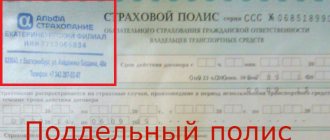Every vehicle owner should be aware before purchasing that it is taxable property. At the same time, citizens are obliged to inform the Federal Tax Service about each unit of transport that comes into their possession. Moreover, based on the receipts received, all motorists are required to pay an annual tax according to the tariff schedule. Failure to pay vehicle tax may result in certain penalties. In this article, we will consider what liability arises for failure to pay taxes on a car or other vehicle on time.
Features of transport tax.
All Russian citizens who own a car, motorcycle, yacht, ATV, snowmobile or other vehicle are required to pay transport tax, unless appropriate benefits are provided for them. The amount of this fee may differ in each specific case and depends on a number of factors:
- Region of registration;
- Type of vehicle;
- Engine capacity of taxable vehicles;
- The cost of this type of property.
It is worth noting that transport tax is subject to payment in any case and does not depend on whether transport is used or not. This type of taxation applies to both individuals and legal entities. The deadline for paying tax is December 1 of the year following the previous tax period for individuals and February 1 for legal entities.
Each car owner at the place of registration receives a tax notice in advance by mail in the form of a receipt for payment. It indicates a specific amount for each unit of transport owned by the taxpayer.
As for legal entities, the amount of tax is calculated by them independently for each vehicle separately. But payment can be made in the form of advance payments in installments or a single payment.
Transport tax: different and on time
The amount of this tax is always different. It depends on the type of vehicle, the power of the car, etc. As a rule, when calculating the final figure, the following important points are taken into account:
- Indicators reflected in the technical documentation for the vehicle. This is motor power information measured in horsepower.
- Tax rate per horsepower. It varies depending on the region. The unit strength indicator is multiplied by the total number of forces.
- How many months during the year did the vehicle belong to the owner?
Important information! Back in 2021, the time frame for repaying the transport duty was shifted upward, until December (previously the time threshold ended at the beginning of November). Repayment of the tax duty is always carried out by the owner of the vehicle in accordance with the clear instructions of the notification information from the tax authorities.
For individuals
Individuals are required to pay movable property tax before December 1 of the year following the reporting period (the reporting tax period for calculating transport tax is 1 year).
Tax calculation for individuals is carried out by the tax office at the place of residence of the owner.
No later than 30 days before the due date for payment of the fee, the owner of the vehicle must receive a notification from the tax service describing the taxable base (car or other type of transport), as well as the accrued amount of tax.
The tax notice is sent by registered mail via Russian Post. If the letter was not received at the appointed time for any reason (delay in the work of the postal service, loss of the letter, etc.), then the owner of the vehicle is obliged to independently contact the tax service office and receive a duplicate tax notice, since the absence of a document is not a reason for non-payment of the regional fee.
For legal entities
Legal entities, in accordance with the current regional law “On Transport Tax”, can pay the fee:
- in parts (advance payments);
- in one payment. For example, advance payments are not provided for by the legislation of the city of Moscow.
The tax calculation is carried out by the legal entity independently. Moreover, the calculation must be made for each unit of transport separately. The timing of tax payment also depends on the current local law.
If payment is made in advance payments, then the tax period is considered to be a quarter. Payment of the advance payment must be made no later than 1 month after the end of the tax period.
Tax payment for the last quarter is due by February 10 of the following year. The procedure for calculation and the amount of tax are indicated in the tax return submitted to the Federal Tax Service by a legal entity annually.
What are the consequences of failure to pay transport tax?
Failure to pay transport tax does not relieve you of liability and does not write off debt. Moreover, for failure to pay on time, a penalty may be imposed, the extent of which depends on the amount and period of delay.
The main types of sanctions imposed for non-payment of transport tax include:
- Accrual and deduction of penalties;
- Issuing a fine;
- Seizure of the debtor's property;
- Withholding funds from bank accounts or monthly salaries;
- Restrictions on travel outside the country.
Consequences of non-payment of TN for an individual
If you have a car, pay for it! Transport tax must be paid before December 1 of the year following the expired tax period. Otherwise, collection from an individual occurs forcibly.
Before the start of administrative proceedings, the tax authorities repeatedly notify the debtor. First, a request is sent to the registration address to pay the overdue payment and accrued penalties. There is a call or visit to people who owe TN in order to inform them about the amount to be paid, as well as possible liability for this. When the deadline for fulfilling the obligation expires, the tax authority has the right to file a claim in court. Typically, the case comes up for consideration six months after the payment is overdue.
As a result, recovery from the property of an individual is possible. It is carried out by transferring funds to the treasury from bank or electronic accounts, cash, and the sale of property. Failure to pay tax may result in an additional fine, the amount of which depends on the form of the taxpayer’s guilt.
Malicious evasion of payment by an individual in case of failure to provide mandatory documentation or providing knowingly false information (for example, if this was revealed by a tax audit) entails criminal liability. As a punishment, the court imposes a fine that is much more significant than for administrative liability, and also:
- forced labor,
- arrest,
- real imprisonment, up to a year.
An act is recognized as a crime only if major damage is caused. It is defined as 10% or more of the amount of 600 thousand rubles for three financial years. Particularly large damage is when a person fails to pay at least 20% of 3 million rubles within 3 years or an amount greater than 9 million. Liability is excluded if the person has fully paid arrears, penalties, fines, and the crime is committed for the first time.
Thus, if residents do not pay the regional transport tax, this can result in serious liability. Also, every day the amount to be paid only increases.
Therefore, it is much more profitable to relieve yourself of the tax burden in time and check that there is no debt than to pay a fine or penalty later.
Penalties for non-payment of transport tax.
If the transport tax is not paid by December 1 or February 1, depending on the type of taxpayer, then from the next day of delay, penalties begin to accrue for each day of non-payment. The procedure for calculating penalties is determined by Article 75 of the Tax Code of the Russian Federation.
The following indicators are used to calculate penalties:
- The accrued amount of transport tax;
- Total number of days of delay in payment;
- Penalty percentage;
- Total amount of debt;
- Refinancing rate according to region.
It is worth noting that the amount of penalties must be paid regardless of the accrued amount of tax and other methods used to ensure the implementation of taxpayers’ obligations. Payment of penalties occurs simultaneously with the payment of tax debt.
The amount of the penalty is calculated as a percentage of the amount of tax payable. The interest rate is determined in the amount of one three hundredth of the current refinancing rate of the Central Bank of the Russian Federation.
If the taxpayer refuses to voluntarily pay penalties, then they are collected forcibly. This occurs at the expense of the debtor’s funds, as well as at the expense of his other property.
The amount of penalties for transport tax for legal entities
The interest rate of the penalty is assumed to be: ...
- for organizations: for delay in fulfilling the obligation to pay tax for a period of up to 30 calendar days (inclusive) - one three hundredth of the refinancing rate of the Central Bank of the Russian Federation in force at that time;
- for delay in fulfilling the obligation to pay tax for a period of more than 30 calendar days - one three hundredth of the refinancing rate of the Central Bank of the Russian Federation, valid for the period up to 30 calendar days (inclusive) of such delay, and one hundred and fiftieth of the refinancing rate of the Central Bank of the Russian Federation, valid for the period starting from 31st calendar day of such delay.
Please note that the amount of the penalty is calculated according to a scheme similar to that discussed earlier. However, there is an important difference. For the first 30 days, legal entities pay 1/300 of the key rate, and for all subsequent days - twice as much (1/150).
Let's assume that Vector LLC, located in Moscow, paid the transport tax for 2021 on March 30, 2021. The tax amount is 6,000 rubles.
Note. The deadline for paying transport tax for organizations in Moscow is February 5 (Moscow City Law “On Transport Tax”).
Thus, the delay was 53 days. Moreover, for the first 30 days, penalties will be accrued as 1/300 of the key rate, and for the remaining 23 - as 1/150.
In addition, on March 23, 2021, the key rate changed and this must also be taken into account when calculating.
The amount of the penalty will be: 6,000 * (30 * 0.1 / 300 + 16 * 0.0975 / 300 + 7 *0.0975 / 150) = 118 rubles 50 kopecks.
Fine for non-payment of transport tax.
Failure to pay transport tax may be punishable by a fine. This is possible in cases where the taxpayer has underestimated the tax base or committed other unlawful acts and violations in non-payment or partial payment of the tax amount. The procedure for collecting fines for non-payment or incomplete payment of taxes is determined in Article 122 of the Tax Code of the Russian Federation.
As a rule, the amount of the fine is set based on the following values:
- 20% from the tax amount if the violations committed were committed unintentionally. For example, the engine power of a vehicle is indicated with an error in the documents or the amount of accrued tax is calculated incorrectly on the side of the Federal Tax Service.
- 40% from the tax amount, if the understatement of the base, illegal actions or inactions were committed intentionally.
Similar interest rates apply to legal entities. The main criterion for distinguishing between 20% and 40% is the presence of intent that influenced the reduction of the tax amount or its partial payment.
Other penalties for debtors.
The procedure for applying other sanctions to taxpayers who do not properly fulfill their obligations is established in the Tax Code of the Russian Federation:
- For individuals – Article 48;
- For individual entrepreneurs and legal entities – Articles 46, 47.
In addition to the main fine, additional penalty obligations may be imposed on the debtor organization if:
1. The vehicle is not registered in the prescribed manner. In this case, an additional fine is imposed in the amount of 10% of the amount of income of the legal entity.
2. If the tax return was not submitted on time, the additional fine will be 5% of the amount of income.
3. If the declaration contained false information, a fixed fine is imposed:
- 40,000 rubles if the error in the information was made unintentionally;
- 80,000 rubles if the inaccurate data is presented intentionally.
Forced collection.
Moreover, debts on taxes and fees can be collected forcibly based on a decision of the regional division of the Federal Tax Service or a court decision. Appeal to the court is carried out within six months from the deadline for repaying the debt specified in the tax claim. In this case, a decision is made containing:
- Name of the tax division.
- Data of the responsible person who made the relevant decision.
- Data of the debtor, his full name or company name, residence or registration address.
- Justification of the debt and its total amount.
- The date of the decision on collection.
The resolution is drawn up in several copies. One is sent as a postal notice to the debtor, and the second is transferred to the bailiff service to initiate enforcement proceedings.
Failure to pay vehicle tax may result in collection through the following means:
1. Money in the use of the debtor in cash or held in bank accounts.
2. Securities, as well as other assets of the taxpayer.
3. The debtor's property, including the vehicle itself.
4. Materials, finished products, raw materials.
If it comes to forced collection, then the priority for debt collection is as follows:
- The first step is to take into account the funds in bank accounts, as well as virtual wallets.
- If no accounts are found, there is no money on them or there is not enough money to pay off the debt, then collection is carried out in cash.
- If the debt cannot be paid in cash, then the debtor's personal property is used.
How to check tax debts?
To avoid unpleasant consequences, it is better to know whether the citizen is responsible for non-payment of transport tax . Since tax notices do not always reach the addressee, there is no point in rejoicing prematurely over the absence of a receipt.
All information on existing debts can be tracked on the State Services portal. In turn, this requires:
1. Go through the registration procedure on the site.
2. Log in and go to your personal account.
3. Go to the “Tax debt” section.
4. Find out about debts in one of the following ways:
- Enter the taxpayer's last name and initials, as well as his TIN. Then click the “Find debt” button;
- Indicate the receipt number (UIN);
In addition, to obtain information about unpaid taxes, you can use the taxpayer’s personal account on the tax office website. To do this you will need:
- Register on the website or log in with a State Services account.
- Log in to your personal account.
Information about existing debts or their absence is contained on the main page.










